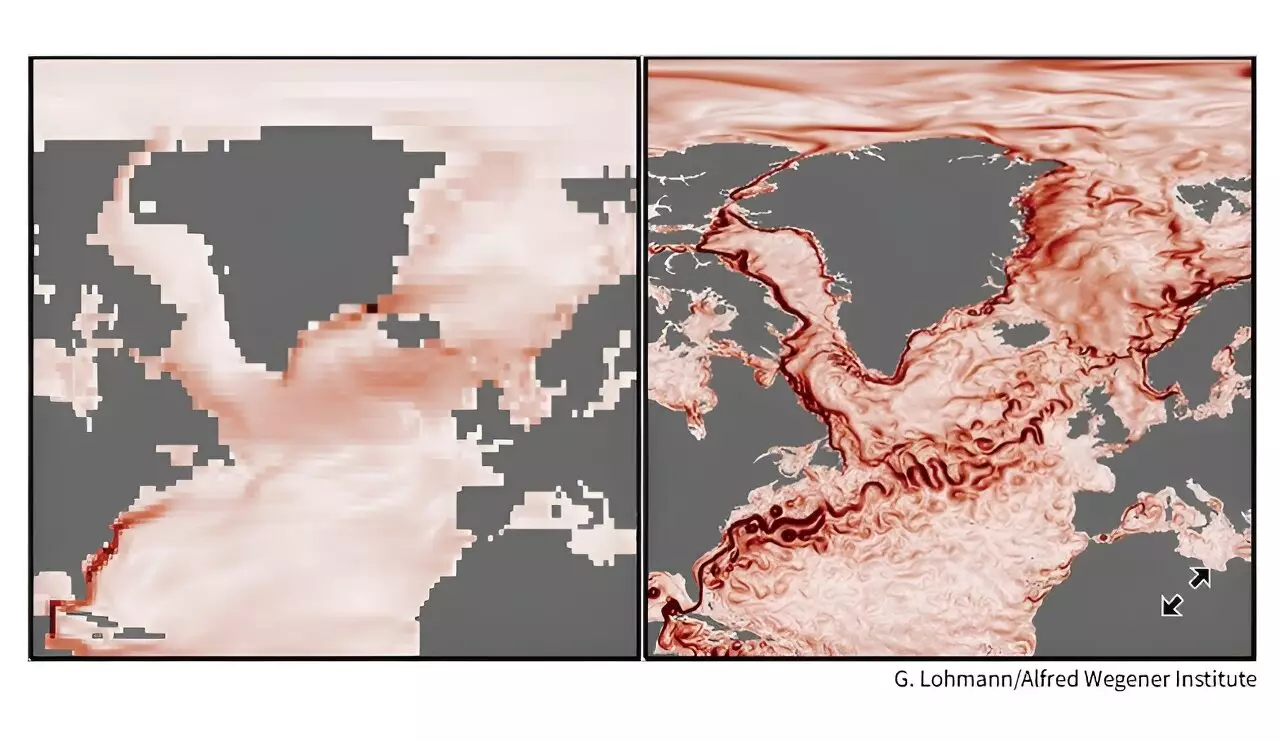Northern Europe is known for its relatively warm climate compared to regions at similar latitudes, such as parts of Canada. This warmth is largely attributed to the Atlantic Meridional Ocean Current (AMOC), which carries warm water northward to the Atlantic, keeping ports in northern Europe ice-free. However, the future of this crucial current is at risk due to global warming. The increasing temperatures are causing the AMOC to mix with freshwater from the melting Arctic, reducing its density and salinity. As a result, the current’s cooling and sinking in the northern Atlantic is decreasing, leading to a potential slowdown in its southward flow. Climate models have projected that the AMOC’s circulation could cease by the year 2200, with recent observations indicating a slowdown in certain regions since 2004.
Recent advancements in climate modeling have allowed scientists to take a closer look at the AMOC and its potential future changes. By using a high-resolution climate model, researchers were able to uncover startling new findings that were previously missed by lower resolution models. The high-resolution model showed that while there is an overall slowdown in the AMOC, there are regions where the current abruptly collapses and unexpectedly strengthens in others. This regional variation highlights the complex nature of the AMOC and the importance of understanding its dynamics on a smaller scale.
One significant revelation from the high-resolution model is the identification of tipping points within the AMOC. Tipping points are critical thresholds where small changes in the system can lead to sudden and significant transitions to a new state. The researchers found that parts of the AMOC have tipping points that were previously unknown in general models. These tipping points can have profound impacts on climate and marine ecosystems, emphasizing the need to incorporate localized dynamics into future forecasts of the AMOC. As the Earth faces an uncertain climatic future, understanding and responding to these tipping points is crucial for anticipating and mitigating dramatic changes in our planet’s systems.
The study also highlights the importance of incorporating regional dynamics into climate models to capture the localized shifts in the AMOC. These shifts, which were previously overlooked in lower resolution models, can have significant implications for the overall climate and marine ecosystems. The feedback between the overall AMOC and small-scale variations could undergo changes in the future, further emphasizing the need for advanced climate models to anticipate and respond to these dynamic shifts.
The future of Northern Europe’s warmth is under threat due to the impact of global warming on the Atlantic Meridional Ocean Current. As the AMOC faces potential slowdowns and regional variations, understanding the complex dynamics of this crucial current is essential for predicting and managing the impacts of climate change on our planet’s systems. By incorporating high-resolution climate models and identifying tipping points in the AMOC, scientists can gain valuable insights into the future changes in our climate and marine ecosystems, ultimately guiding us towards a more sustainable and resilient future.


Leave a Reply